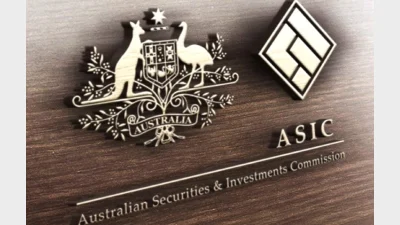AusSuper leans on private assets to steady investment course



For AustralianSuper, private assets are a steady, grounding component of its investment strategy, one helping the fund mitigate risk and smooth returns, especially when public markets are volatile.
Australia’s largest super fund maintains a strategic long-term exposure to private markets, with 27.2 per cent of its portfolio allocated across infrastructure, private equity, property, and private credit.
Speaking at Morningstar’s conference last week, Jessica Melville, head of mid risk portfolio strategy and research at AustralianSuper, said: “We think of our private assets as the ballast in the boat.”
The fund’s exposure to private equity and infrastructure has remained stable over time, with gradual growth observed from December 2015 through to the end of 2024.
“We’re constantly thinking about where the opportunities arise, and also where pricing is looking most attractive. Where are we best getting compensated for the risks that we are taking,” Melville said.
“And it’s never more important than in an event like April 2, when it feels like the world has gone to hell in a handbasket.”
Melville said the fund has been steadily building its exposure to private credit over the past decade, aiming to capture the full spectrum of opportunities, from real asset lending to the US mid-market.
“It’s not a new asset class for us,” she said. “What’s been interesting for us is the breadth of that opportunity. For us it started in real asset lending … and then we do our middle market or corporate direct lending through a manager in the US, and that’s probably seen some interesting activity more recently.”
The fund’s unlisted asset strategy heavily relies on international markets, Melville said, with significant efforts made over the past decade to strengthen its global capabilities.
“Most of the unlisted assets don’t reside within our borders, and the US is a very important market, so we’ve been thinking about how do we build up to having that presence in the US,” she said, adding that the fund’s New York office, established in late 2021, was a significant accomplishment.
Late last year, the fund, which also operated an office in the UK, confirmed it had about 60 professionals in New York and nearly a third of its member assets invested in North America. By 2026, it plans to grow its US headcount to 120.
Besides the fund’s reliance on the US for its unlisted exposure, Melville said that as it grows, AustralianSuper is needing to cast a wider net in its listed equities exposure too, with international markets offering a broader opportunity set than their local counterparts.
As at December 2024, around 65 per cent of the fund’s portfolio was invested in equities – approximately 25 per cent in domestic shares and 40 per cent in international.
“We are global. We truly look at the opportunity set as far and as deep as we can go,” she said.
Volatility = opportunity
Reflecting on recent market volatility, Melville said that AustralianSuper has actively used both sharp drawdowns and strong rallies to rebalance its portfolio. She said that the fund’s hybrid investment model – combining internal and external managers – alongside an active management approach has served it well.
“We’re active at all levels … We’re active asset allocators and we also believe very truly in stock selection as an important driver of value-added outperformance,” she said. “We don’t apologise for being active.”
Elaborating on the specifics of its investment approach over the past year, Melville said that throughout 2024, the fund had maintained a constructive view on global growth and had been increasing its exposure to growth assets, particularly through international equities. This, alongside its once constructive view of the US, has changed in recent months.
“More recently, and even going into April 2, we’ve been monitoring those policy impacts closely. To borrow a term, it’s a little bit of a wait and see, it’s hard to predict exactly what the first-order effects are, and we know that the second-order effects will also be quite interesting,” she said.
What hasn’t changed is the fund’s commitment to value investing, with Melville saying it remains constantly alert to any shifts in the investment outlook.
Touching on cryptocurrency, Melville said that because the asset class technically doesn’t generate income – and given funds must ensure valuations remain current at any point in time – “it’s very difficult to make it stack up as a stand-alone investment.”
But while the fund doesn’t hold cryptocurrencies directly, it does maintain exposure through the broader cryptocurrency value chain.
“We think about the underlying technology and the opportunities for our investors to get exposure to that,” she said.
“We think about different industries, different companies where the blockchain technology can be quite transformative to their businesses and really improve their productivity. So that’s something that is embedded in the portfolio.”
AustralianSuper aims to have 70 per cent of all member assets managed internally by 2030. In November last year, Morningstar said that the fund’s investment team numbered around 370, up from 120 at the start of 2020.
Recommended for you
The Gateway Network Governance Body has unveiled a detailed roadmap to guide the superannuation industry through the upcoming Payday Super reforms.
CPA Australia urges the ATO to extend compliance support for small businesses facing major system changes ahead of Payday Super reforms.
Superannuation funds ramp up collective efforts to counter rising cybercrime, updating standards and sharing intelligence across the industry.
The regulator has fined two super funds for misleading sustainability and investment claims, citing ongoing efforts to curb greenwashing across the sector.









